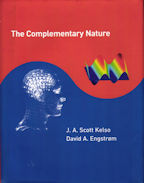Experiments show that the human brain is capable of displaying two apparently contradictory, mutually exclusive behaviors at the same time. Coordination dynamics—a mathematically expressed theory that reconciles the scientific language of “states” with the novel dynamical language of “tendencies”—attests to the complementary nature inherent in human brains and behavior. It may explain, Kelso and Engstrøm argue, why we (and nature) appear to partition things, events, and ideas into pairs. Kelso and Engstrom’s account is not just metaphorical; the reconciliations they describe are grounded in the principles and mathematical language of the theory of coordination dynamics. The Complementary Nature provides a clear-cut methodology for this evolving theory of brain and behavior that can also be applied to areas and developments outside the neurosciences, hence aiding reconciliations within and between disparate fields.
